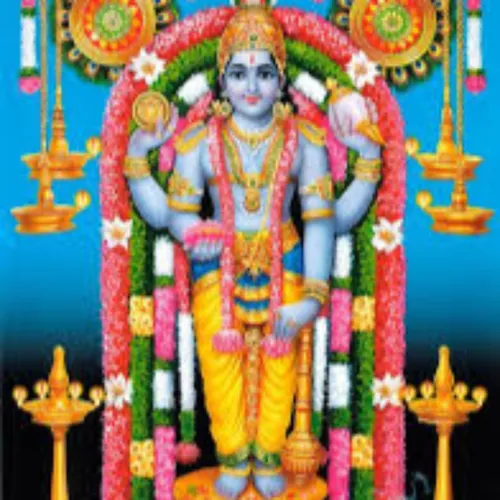Dashakam 037 Prelude to Sri Krishanavatharam
- Author
- Santana Dharma The Life
- Published
- Thu 14 Aug 2025
- Episode Link
- https://podcasters.spotify.com/pod/show/santana-dharma-the-life/episodes/Dashakam-037-Prelude-to-Sri-Krishanavatharam-e36m1k6
This Dashakam is the commencement of the Mahābhāgavata section in Narayaneeyam, shifting focus from the Lord’s Avatāras to His cosmic form and ultimate glory. This Dasakam encapsulates the devotee’s culminating humility, devotion, and intense longing for union with the Divine.
After recounting the ten principal Avatāras through Dashakams 27–36, Dashakam 37 opens with a heartfelt plea by the poet-saint Melpathur Narayana Bhattathiri for direct darśana (vision) of Lord Narayāyaṇa in His Vibhūti (cosmic) form.
It underscores that mere recitation and understanding of past incarnations culminate in the aspirant’s deepest yearning: to witness the Lord’s all-pervading majesty beyond individual stories.
The poet expresses profound self-abasement, acknowledging his unworthiness yet driven by unwavering devotion to seek grace.
This humility is portrayed as the highest virtue, the key that unlocks the vision of the transcendent Divine.
The Dasakam employs vivid imagery contrasting the Lord’s luminous brilliance with the poet’s inner darkness of ignorance.
The aspirant’s mind is likened to a mirror clouded by ego and desire; he beseeches the Lord to illuminate it so that it may reflect divine reality.
Unlike earlier chapters that narrate external deeds of Vishnu’s mercy, Dashakam 37 shifts to introspection—celebrating internal surrender over outward exploits.
It frames darśana not merely as sight but as transformative grace that dissolves the boundary between devotee and Divine.
In essence, Dashakam 37 is pivotal as it transitions the work from divine narratives to the soul’s intimate longing for the Lord’s universal presence, highlighting humility and inner awakening as the path to the supreme vision.
Transition to Supreme VisionThemes of Devotion and HumilityMetaphor of Light and DarknessCulmination of Bhakti
Namaskarams and Dhanyavadaha to Smt Savithri Ramesh and Smt Asha Murarka for their help.
